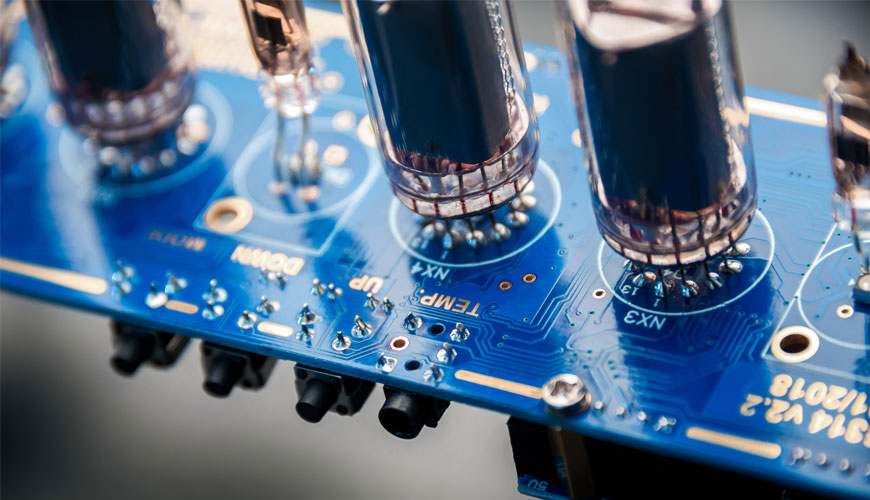

EUROLAB laboratory provides testing and compliance services within the scope of MIL STD 220C standard. The MIL STD 220C standard covers a method for measuring the insertion loss of pass-through suppression capacitors and single- and multi-circuit radio frequency (RF) filters at frequencies up to 50 gigahertz (GHz) in a 10 ohm system.

The insertion loss of a filter connected to a particular transmission system or supply via a suppression capacitor at a given frequency is defined as the ratio of voltages appearing along the line just beyond the insertion point, before and after the insertion. As measured here, the insertion loss is represented as the ratio of the input voltage required to achieve a constant output voltage with and without components in the specified 50 ohm system. This ratio is expressed in decibels (dB).
When MIL STD 220C testing is done with a network/spectrum analyzer, the equipment usually provides a constant output voltage and can be adjusted to record the ratio of output to input voltage in decibels. The network/spectrum analyzer will provide a direct loss reading. There is no need to do any conversion of voltage readings.
The test setup (no load), the test circuit must be set up using a network or spectrum analyzer. The test setup must be able to demonstrate a repeatable insertion loss within 1.0 dB over the required frequency range. All test equipment shall be well protected and filtered to such an extent that conducted or radiated leakage does not affect the output level and sensitivity, respectively, required to measure the maximum insertion loss required.
To measure the insertion loss of a filter under test setup (with load), load, current, or voltage conditions, the DUT must be isolated from the network analyzer using DC blocking capacitors. A pair of suitable LC networks will be connected to the DUT to inject DC current or DC voltage into the filter. Normalization of the device will be completed over the frequency range of interest before any measurement is made with the applied dc load. The direct current (DC) source used to make full load insertion loss measurements will be a floating DC source and will not be connected to ground.
Set up equipment for shielding test, filter output condition of insertion loss measurement. The test assembly should then be attached to the filter, rather than the component, using a sheet of solid brass or copper at least 2,38 inches thick (60,45 mm) with plane faces at least 0,25 inches (6,35 mm) wide in all directions. This plate must be placed along the coupler and center conductor of the measuring equipment assembly so that the signal source and load are completely shorted by the faces of the plate. The insertion loss must be at least 80 dB greater than the insertion loss to be measured.
This standard aims to provide methods for insertion loss measurements of pass-through suppression capacitors and single and multi-circuit radio frequency power line filters. These insertion loss measurements are performed on a 50 ohm system for quality control purposes during batch production.
EUROLAB also provides MIL STD 220C testing services within the scope of other military testing services. Thanks to these services, businesses receive more effective, high-performance and quality testing services and provide safe, fast and uninterrupted service to their customers. Do not forget to contact EUROLAB for testing and certification services.
To get an appointment, to get more detailed information or to request an evaluation, you can ask us to fill in our form and reach you.